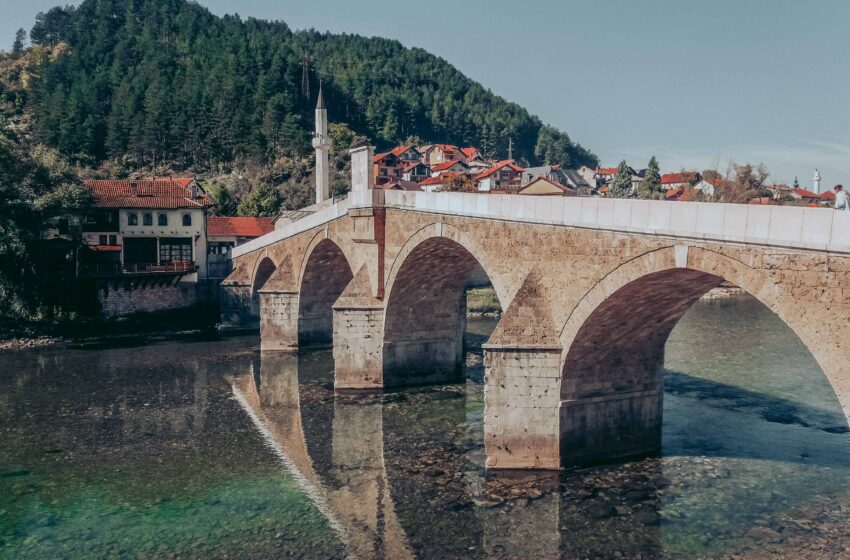
Bosnia & Herzegovina’s Only Travel Guide You Need For A Great Trip in 11 Easy Steps
- Destinations Europe
Cruisit Team
- May 31, 2022
- 0
- 4678
- 86 minutes read
Bosnia and Herzegovina’s Background
Bosnia and Herzegovina’s capital has been the site of key historical events, including the murder of Archduke Franz Ferdinand in 1914 and the horrors of a four-year civil war that lasted until 1995. Sarajevo, on the other hand, is the country’s political, social, and cultural center, noted for its celebration of peaceful religious cooperation.
Until 1992, Bosnia-Herzegovina was part of Yugoslavia’s Republic (including Croatia, Serbia, Slovenia, and a few more countries). When it strived for independence (as other countries did), it led to a war! On March 3, 1992, Bosnia and Herzegovina declared independence from Yugoslavia. Bosnian Serbs, backed by neighboring Serbia and Montenegro, retaliated with violent resistance. Bosniaks and Croats decreased the number of warring factions from three to two in March 1994. On November 21, 1995, in Dayton, Ohio, the warring parties signed a peace deal that ended three years of interethnic civil warfare. The Dayton Agreement preserved Bosnia and Herzegovina’s international borders while establishing a single multi-ethnic and democratic administration. However, after being ripped apart by war for a period, it is now a calm country worth visiting.
Bosnian Serbs fought against independence, backed by the Serbian government. On the other hand, tensions between Croats and Bosniaks contributed to the outbreak of war in 1993.
When Bosnia and Herzegovina gained independence, the nation was divided into three entities: the Federation of Bosnia and Herzegovina, the Republic of Srpska (in the country’s north and east), and the district of Brcko. There are three ethnic groups: Muslim Bosniaks, Catholic Croats, and Orthodox Serbs. Bosnian Serbs make up the majority of the population of the Republic of Srpska. The majority of Croats are Catholic in the south (which is truly Herzegovina). In the rest of the nation, the majority of Bosniaks are Muslim.
However, diverse ethnicities may be found across the country. Prior to the commencement of the war, mixed marriages and individuals of different religions coexisted fairly well. But, this all changed once the conflict began in the 1990s! The scars have not completely healed, and there are still tensions.
Since the Ottoman Empire dominated Bosnia-Herzegovina, there is a lot of Turkish influence throughout the nation, including Herzegovina. As a result, while the political environment is complex, you may be unaware of the variations across locations.
But, since this is all in the past now, inform your pals that Bosnia is no longer a war zone. It’s shocking how many people believe Bosnia is still in conflict more than 20 years after the Yugoslav Wars and the Siege of Sarajevo. Bosnia is a safe place to visit, and you won’t be the target of a sniper hidden in the hills!
The country is not a member of the European Union or Schengen. Most nationals can receive a 90-day visa upon arrival. Check before going to see whether you qualify Don’t assume that since other countries allow visa-free travel, you’ll be able to enter Bosnia.
“The country that sparked World War I, wrapped in mystery and charming history coming from multiple empires, still recovering from its painful history“
This country should be one of the first nations that comes to mind when planning an Eastern European road trip. This beautiful nation is often overlooked by its neighbor, Croatia. Don’t get us wrong: Croatia is a beautiful nation in its own right, but Bosnia and Herzegovina is something else entirely.
Bosnia and Herzegovina is most appealing as the result of Ottoman and Austro-Hungarian history seen through a Southern Slavic lens. Add nature, and you’ve got yourself a mixed adventure with an East-meets-West atmosphere.
The country of Bosnia is still one of Europe’s least visited nations, but its popularity is growing, and for good reason. It’s a breathtaking place, rich in history, culture, and natural beauty. Many people still identify the nation with the devastating civil war of the 1990s, and the wounds are still obvious, as you now know. But visitors today will remember the nation for its deep, genuine kindness, stunning mountains, numerous medieval castle remains, river rafting, and low-cost skiing. It is also home to cosmopolitan towns, old architecture, turquoise rivers, waterfalls, green rolling hills, and rocky mountains.
Bosnia and Herzegovina is one of Europe’s most aesthetically lovely areas, with blue rivers and sheep huddled on high slopes. It also presents a fascinating combination of East and West in the heart of the Balkans, with muezzins summoning the faithful to prayer against a sound of church bells. Appropriately, the country is now selling itself as the “heart-shaped land,” perhaps inadvertently exposing more than just the form of its borders: this is still a country divided into two separate entities, the product of a brutal war in the mid-1990s. However, after making headlines for all the wrong reasons not long ago, Bosnia and Herzegovina is now busy and rightfully re-proclaiming themselves on the international travel map as a genuine backpacker and tourist magnet.
The revived old centers of Sarajevo and Mostar, which are distinguished by spectacular Turkish-era stone architecture with quirky pubs, appealing street-terrace cafés, traditional BBQ restaurants,, and active arts sectors, are major draws. There’s also much to see and do in the mostly rural interior, all at prices that make the country one of Europe’s best-value destinations.
- Explore the grounds of Ostroac.
- Visit the Jajce watermills.
- Walk through the Tunnel of Hope, the country’s lifeline during its siege where you get to relive its horrors.
- Dedicate some time for Galerija 11/07/95 to understand the past
- Take a tour inside the Bosnia and Herzegovina National Museum.
- See Kajtaz House.
- Check out the Bosnian Pyramids.
- Glimpse the Mehmed Pasha Sokolovic Bridge.
- Take a look around Tito’s Bunker.
- Explore the Tara River Canyon via whitewater rafting.
- Visit the most magnificent masjid in the Balkans, The Emperor’s Mosque
- Take the cable car to Mount Trebević and relive its Winter Olympics constructions.
- Visit the weather-worn Old Jewish Cemetery in Alifakovac which dates back to the 1600s
- Admire the unusual architecture of Sarajevo City Hall
- Stand on the site where World War I began at the Latin Bridge
- For the past two decades, Bosnia has not been a conflict zone anymore.
- Languages spoken there include Bosnian, Croatian, and Serbian, with English being widely spoken among young people and in stores.
- The mark is the local currency. A dollar is worth around 1.69 to 1.95 marks (KM)
- Credit cards are not recommended. Bosnia and Herzegovina is a cash-based society. There are ATMs available, but expect to pay up to 7% in fees.
- Shopping in Bosnia can get too costly, real fast.
- Bosnia can get chilly, so make sure you pack accordingly.
- Bosnians and Herzegovinians are pleasant and polite. However, visitors should avoid discussing conflicts unless the locals are the ones to speak up and open up first.
- Get your ISIC Card to save 20 to 50% on entry to museums and other tourist sites.
- You may see two alternatives to the currency sign and they are KM or BAM
Crime & Scams in Bosnia and Herzegovina
Travelers typically arrive assuming Bosnia-Herzegovina to be a dangerous area, but it immediately becomes clear this isn’t the case, and that the rate of crime is relatively low by European standards.
Although the crime rate is typically low, and crime against foreigners is uncommon, you should be wary of scams and pick-pocketing, which are the most prevalent dangers you’ll face on public transportation, in large cities, and in tourist and heavy trafficked pedestrian areas in Sarajevo and other major cities. Always keep an eye on your belongings and just take what you need for the day. Be cautious and ensure that your personal possessions, including passports, are safe, as is the case wherever you are throughout the world.
The two police forces in Bosnia and Herzegovina are normally straightforward to work with, but carry your passport or a copy always available in case of a spot check.
Hikers should also be careful of unexploded landmines. Although the great majority have already been cleared, and there is little threat in any urban areas with big populations, it is best to stick to swept and cleared pathways in the countryside. This is a major issue, so stay on the trails!
Healthcare in Bosnia and Herzegovina While Traveling
Overall, Bosnia and Herzegovina’s healthcare system is deplorable. Citizens end up spending their own money on ineffective operations. In exchange, the government underfunds its healthcare system. Overall, healthcare in Bosnia and Herzegovina is not ideal, so you might want to consider carrying insurance (it’s mandatory anyways).
Before every trip, make sure you are up to date on all routine vaccinations. Among the key recommended vaccines globally are chickenpox (Varicella), diphtheria-tetanus-pertussis (DTP), influenza (flu), measles-mumps-rubella (MMR), polio, and shingles. Obtaining immunization cards for Yellow Fever, Hepatitis A and B, Typhoid, Rabies, and Meningitis is important when traveling.
You are required to purchase travel medical insurance when visiting Bosnia and Herzegovina. Complete medical coverage is always recommended when traveling because you never know what you could face when abroad. This is especially true when visiting a distant nation with few extensive healthcare options. You may require emergency evacuation, and unless you have insurance, being in such a circumstance might endanger your life.
Early June through early September has the finest weather, with the hottest months. However, unlike other Mediterranean nations, Bosnia and Herzegovina do not have a large amount of coastline to enjoy. If you wish to go trekking and sightseeing in the country, the milder seasons of spring, from late March to late May, and Fall from late September to mid-November, may be more suitable. Winters may be severe, lasting from November to March, with temperatures plunging below freezing and snow falling often.
Bosnia and Herzegovina has various microclimates, which are worth considering when determining the ideal time to visit. The mild weather patterns of the Adriatic Sea farther west distinguish Bosnia, while the rocky highlands in the east give the area a distinct alpine character.
Shoulder Season
From late March to late May, the temperature ranges from 23°C (74°F) to 9°C (49°F), with a not extremely humid atmosphere and rain being relatively common, but overall the most pleasant weather. Spring is the second busiest season for tourism, and the pleasant weather makes it ideal for hiking, bicycling, and other outdoor activities.
Another reason to visit Bosnia and Herzegovina in the spring is to enjoy a true Bosnian holiday, like being around in Labor Day (May 1st), which is observed throughout the nation and is an official holiday. Most people celebrate by going on picnics, and in certain regions, public activities are held. Locals gather outside of town to roast lamb on a spit, drink wine, and listen to loud music while lounging on large blankets or benches; it doesn’t get more Bosnian than that!
Temperatures in the northern half of the nation is about 9°C (48°F) while in the southern part of the country will be around 20°C (68°F) beginning in late September or early October. In November, the temperature drops to 2C° (36°F), giving the month a distinctly wintery vibe.
Visiting Bosnia in Autumn also packs numerous activities that are well suited for people who like the chilly climate. You get a m ild weather, winter activities in the Olympic Mountains, less visitors making it simpler to book your lodgings and rates are generally lower than during other months, and last but not least, the nation shifts with leaves changing red, orange, and yellow creating a very distinctive scenery.
High (Peak) Season
If you are seeking the hottest months to visit Bosnia and Herzegovina, the ideal time to come is from late May (early June) to early September, since these are the warmest months. The middle of the year has quite pleasant weather with moderate-high temperatures. Specifically, because the months of June to August are the busiest for tourists in Sarajevo, hotels and other accommodations may be more expensive than normal. The daytime temperature is around 31°C (87°F) and rarely falls below 17°C (62°F). This period of the year has the lowest possibility of rainy days, with 3 to 7 chances of rain every month.
You can enjoy a range of interesting outdoor activities during the summer, such as river rafting, kayaking, and mountain climbing. Swimming in gorgeous lakes and enjoying summer nights in Sarajevo are among the options, as is the Adriatic Sea retreat in Neum.
But, even in the summer, despite livelier streets, Bosnia receives very few visitors as compared to its neighbors. Hotel and flight prices, on the other hand, may be higher than usual at this time of year. We recommend that you plan ahead of time if you want to visit Bosnia and Herzegovina during these months.
Off-Season
In comparison to the very cold nations we all know about, winter in Bosnia and Herzegovina is not considered cold, with temperatures ranging from 39°F (4°C) in the lowlands to around 23°F (-5) in the mountains. During the winter months, cold waves from the north frequently bring snow and frost to much of Bosnia and Herzegovina, but only a slight breeze and cooler temperatures to Mostar.
Winter is an excellent season to explore the country for skiing and other cold weather activities, as the Olympic Mountains such as Jahorina, Bjelasnica, and Vlasic are becoming increasingly popular with great lodging and rising tourism; consider the fact that it is among the most affordable palces to ski in Europe!
Because Bosnia and Herzegovina is a multi-cultural nation, December to mid-January is jam-packed with celebrations. Beginning with Christmas Eve, then New Year’s Eve, then Orthodox Christmas, then Republic Day, and finally the Orthodox New Year, all between December 24th and January 14th. If you’re looking for a wonderful party and good times, Bosnia & Herzegovina is the destination to go!
Bosnia and Herzegovina is as close to being landlocked as it gets, yet it is relatively easy to approach from all sides. Trains, planes, cars, and boats are all ways to enter Bosnia from various places. There are several bus connections accessible with locations of origin such as Belgrade, Split, and Dubrovnik, among others. There are several car crossing points between Bosnia and its surrounding countries.
By Plane
Bosnia and Herzegovina has four international airports. Sarajevo International Airport, also known as Butmir Airport, is Bosnia and Herzegovina’s principal international airport, serving Sarajevo, the country’s capital. Among the carriers with direct or transit flights from their home countries are Wizz Air, Turkish Airlines, Norwegian, Eurowings, Nas Air, Qatar Airways, InterSky, Swiss, and Austrian Airlines.
By Train
There is a daily rail service from Zagreb, Croatia, to Ploe, passing through Sarajevo and Mostar.
By Car
People intending to enter Bosnia have several alternatives from the nations around it. Several checkpoints exist between Croatia, Serbia, Montenegro, and Bosnia and Herzegovina. There are approximately 30 checkpoints between Croatia and Bosnia, the most important of which are Doljani, which runs from the coast to Mostar, and the two crossings of the Neum Corridor, or Bosnian Riviera, which divides Croatia in two and separates Dubrovnik and southern Dalmatia from the rest of the country. It takes around three hours from Niksic in Montenegro, and there are eight border crossing points between the two countries. The Bratunac border crossing is a new crossing point that serves Serbia and Bosnia. By July 2021, Bosnia’s government plans to establish many more crossing points between the country and its three neighboring countries.
By Bus
Buses travel frequently between Belgrade, Serbia and Sarajevo, Bosnia, as well as on additional routes. The cost of a ticket from Belgrade to Sarajevo begins at 15 EUR. The trip takes roughly 7 hours. Centrotrans Eurolines and Lasta are the direct bus providers. BS Tours is another operator, although it does not have direct buses to Sarajevo; instead, it stops at Zvornik, and tourists must exchange buses from there to Sarajevo through Drina Trans.
Daily, one-stop or direct buses run from Podgorica, Montenegro, to Mostar or Sarajevo, Bosnia and Herzegovina, and can be purchased at the bus station for around 15 to 20 euros. Bozur also operates a route from Podgorica to Sarajevo. The bus from Podgorica to Mostar makes a stop at Dubrovnik, Croatia, and tourists must purchase tickets from the bus terminal to go to Mostar. Bozur operates the route from Podgorica to Dubrovnik, and Globtour, Croatia Bus International, and Centrotrans Eurolines operate the route from Dubrovnik to Mostar, dropping you off at the East Bus Station.
There are various bus routes from Zagreb, Croatia to Mostar and Sarajevo. Globtours and Croatia Bus International run the route, which takes around 8 hours to arrive and costs between $25 and $50. Centrotrans Eurolines, Biss-Tours, Fils, Globtours, and Croatia Bus International run buses from Zagreb to Sarajevo as well with prices ranging from $20 to $55.
By Boat
Neum, Bosnia and Herzegovina’s lone beachfront location, as well as its only port. Neum is the sole seaport in Bosnia and Herzegovina, located on the Adriatic Sea. Bosnia’s coastline is just around 20 kilometers long, making it the world’s second shortest. The seas are often too shallow for large boats and yachts to enter, however, they can be moored.
There is a vehicle ferry that runs between Bari and Dubrovnik, which is a short ride from Neum, Bosnia, and is an 11 to 14 hours boat ride, followed by a bus or car ride of approximately one hour to Neum.
Because most of the country’s transportation infrastructure, notably the train network, was devastated during the conflict, getting around in Bosnia and Herzegovina can be difficult. However, things are improving, and reliable bus services will almost always be able to get you where you want to go; it will just take a little longer than you may assume. Timetables can be found at bhtourism.ba.
By Bus
In Bosnia and Herzegovina, the bus is the basic means of transportation. Intercity and international buses travel long distances. Any bus between towns is typically easy to flag down. Reservations are sometimes required for late-night journeys or during peak holiday seasons. Among the largest operators are Autoprevoz, Globtour, and Centrotrans.
A bus from Sarajevo to Mostar takes 2.5 hours and costs around 10.50 BAM ($6 USD), but a bus from Sarajevo to Trebinje takes nearly 10 hours and costs approximately 47 BAM ($27 USD). The trip from Mostar to Jajce takes around 4.5 hours and costs about 26 BAM ($15 USD). When possible, reserve a day in advance because seats fill up rapidly during the summer season due to peak demand.
It’s worth noting that buying a round-trip ticket from the same operator can save you up to 60% more than buying two single tickets. You must, however, return with the same business or you will be charged again. Also, expect to pay an additional 2-4 BAM ($1.20-2.25 USD) if you need to store luggage in the cabin.
By Train
Trains run in Bosnia and Herzegovina, however, they are out-of-date and incredibly sloth-like. We do not suggest that you use them, normally. The sluggish service is due to the chronic underfunding, most trains are too slow or infrequent to be considered; the one exception being the twice-daily route connecting Sarajevo and Mostar, which is a spectacularly picturesque ride.
By Car
All visitors who plan to drive in Bosnia and Herzegovina must make sure they obtain an International driving license (IDP) in their home country or country of residence before they travel. The IDP, which is valid for 2 years, proves that you hold a valid driver’s license in your country of residence. Euro licenses are not valid inside the country and visitors will still need to present an international driving permit.
The majority of this Bosnia itinerary can be executed with public transportation. Bosnia has an excellent bus network, with frequent connections between major cities. However, if you wish to visit Una or Sutjeska National Parks, you might want to consider renting a car. In Bosnia and Herzegovina, renting a car is inexpensive. Furthermore, it provides you with a great deal of flexibility and freedom to visit off-the-beaten-path locations. Just make sure the car is fully insured.
By Taxi
Taxis are plentiful and dependable in Sarajevo, whereas Mostar has fewer alternatives but is nonetheless frequent. That implies that taxi services are only available in big cities. Therefore, finding a cab in the countryside will be more challenging, assuming they exist at all. If you need to rent a cab, the first kilometer costs roughly 1.50 BAM ($0.90 USD) and each additional kilometer costs around 1 BAM ($0.60 USD), but bear in mind that rates fluctuate over time and may not be the same when you visit Bosnia.
There are several SIM card options available in Bosnia and Herzegovina. BH Telecom, m:tel, Haloo, and HT Eronet are the four operators. SIM cards from any of these carriers can be purchased for as cheap as 4 KM (2.50 USD) from official retailers, and SIM cards can even be purchased at Sarajevo International Airport. However, they are also accessible in other places, such as grocery stores, if you ever forget to pick them up from the Airport.
For 3 KM, you can buy a 7-day package with 1 GB of data. Tourist plans with BH Telecom start at about 20 kilometers and include 15 gigabytes of data. M:tel has plans starting at 1 KM for 1 GB of data. HT Eronet has one of the worst rates, with around 15 KM for 600 MB including minutes, however, it also provides data alone plans beginning at 3 KM for 200 MB and Social plans with 10 GB for 6 KM. Haloo offers plans ranging from 1 KM for 100 MB of data and minutes to data alone plans with 2 GB of data but only valid for 1 day. A plan with 2 GB of data but valid for 7 days is also available for 3 KM.
You also have the option of purchasing a prepaid eSim card like from Airalo, SimCorner, or Nomad. The companies provide data-only plans to put on a phone that is eSim ready, so make sure your phone is compatible. It is also possible to opt-in for a WiFi Hotspot from Solis. Check before you travel because they service certain destinations. Airalo by far has the most coverage of almost 180 countries.
Local Internet & WiFi
Wi-Fi is widely available in Sarajevo and Mostar, and anticipate to spend 1–2KM/hr in internet cafés. In Bosnia and Herzegovina, the average download speed of fixed internet connections was 43.45 Megabits per second (Mbps). Mobile internet speeds are slightly slower, hovering around 32.66 Mbps. Many hotels, hostels, and bed and breakfasts have internet access as part of the package. In addition, there is free internet in the airports.
Top Places in Bosnia and Herzegovina

Baščaršija Old Town
Sarajevo’s old market, as well as the city’s historical and cultural heart, is known as Baščaršija. The city of Baščaršija was created in the 15th century by Isa-Beg Ishakovi. Baščaršija is located in the municipality of Stari Grad on the north side of the river Miljacka. There are various historic structures on Baščaršija, including the Gazi Husrev-beg Mosque and sahat-kula. Today, Baščaršija is Sarajevo’s most popular tourist destination. There are 1,790 people living in the Baščaršija local community.
Sarajevo Tunnel
The Sarajevo Tunnel, constructed by the Bosnian Army between March and June 1993 during the Siege of Sarajevo, served as a vital lifeline for food, supplies, and people entering and leaving the besieged city. The tunnel connected the neighborhoods of Dobrinja and Butmir in Sarajevo, allowing food, ammunition, and humanitarian aid to enter and exit the city. The tunnel was critical in avoiding the UN arms embargo and supplying weapons to city defenses. The entrance is now a museum, and you may go through a segment of the tunnel to feel the claustrophobia and anxiety that everyone who used it felt. This is a peaceful historical monument with a roughness that allows visitors to appreciate the structure for what it was.


Yellow Fortress
The Yellow Castle, also known as the Yellow Bastion or Fortress, is a gun fortress located at the entrance of the “Walled City of Vratnik.” It was constructed between 1727 and 1739 in the Jekovac neighborhood, between the Jajce Barracks and the Jekovac water reservoir. In 1878, it was one of the defending positions against Austro-Hungarian soldiers. The fortification was often devastated and rebuilt. The most recent refurbishment was completed in 1998.
Kravica Waterfall
Kravica Waterfall is a massive tufa cascade on the Trebiat River in Herzegovina’s karstic heartland. It is ten kilometers south of Ljubuki and forty kilometers south of Mostar. Its height is around 25 meters, and the radius of the lake at the waterfall’s foot is 120 meters. Kravica Falls also contains a small cafe, a rope swing, a picnic area, and a camping area. The best time to visit is in the spring, when the fall foliage is at its peak and the parched environment turns a vibrant green. Kravica is a popular swimming and picnic location that draws visitors from Mostar, Meugorje, and Dubrovnik during the busy summer season. Restaurants around the waterfalls often provide grilled meals and seafood specialties. A tiny cave with calcium carbonate stalactites, an ancient mill, and a sailing ship are also nearby.


Latin Bridge
The Latin Bridge is an Ottoman bridge that spans the Miljacka River in Sarajevo, Bosnia and Herzegovina. Gavrilo Princip assassinated Archduke Franz Ferdinand of Austria at the northern end of the bridge in 1914, sparking the July Crisis and, ultimately, the outbreak of World War I. The Latin Bridge is a tiny, plain building with three arches that crosses the Miljacka River. It is thought to have been constructed in the mid-16th century. This historic incident is honored with a somewhat modest plaque; in the Socialist Federal Republic of Yugoslavia (1946–1992), the Bosnian-Serb killer, Gavrilo Princip, was regarded as a hero.
7-day Itinerary in Bosnia and Herzegovina
Day 1
Arrive at Sarajevo and Start Exploring
Begin your Bosnia itinerary at the capital, which is energetic and dynamic. Sarajevo’s lovely old town and breathtaking setting in the Dinaric Alps make it easy to fall in love. It is not only a city rich in history and culture, but it is also the starting point for a range of outdoor activities in the neighboring mountains.
The nation’s capital has a long history and has been a part of several empires. The Baščaršija mesmerizes you to a time when Bosnia was governed by the Ottomans. The new core, with its beautiful Austrian-Hungarian architecture, speaks of another era. The communist apartments stand in sharp contrast to the hillside suburbs, which feel more like a medieval hamlet. That why, begin your first day by touring Sarajevo’s Old Town, Baščaršija.
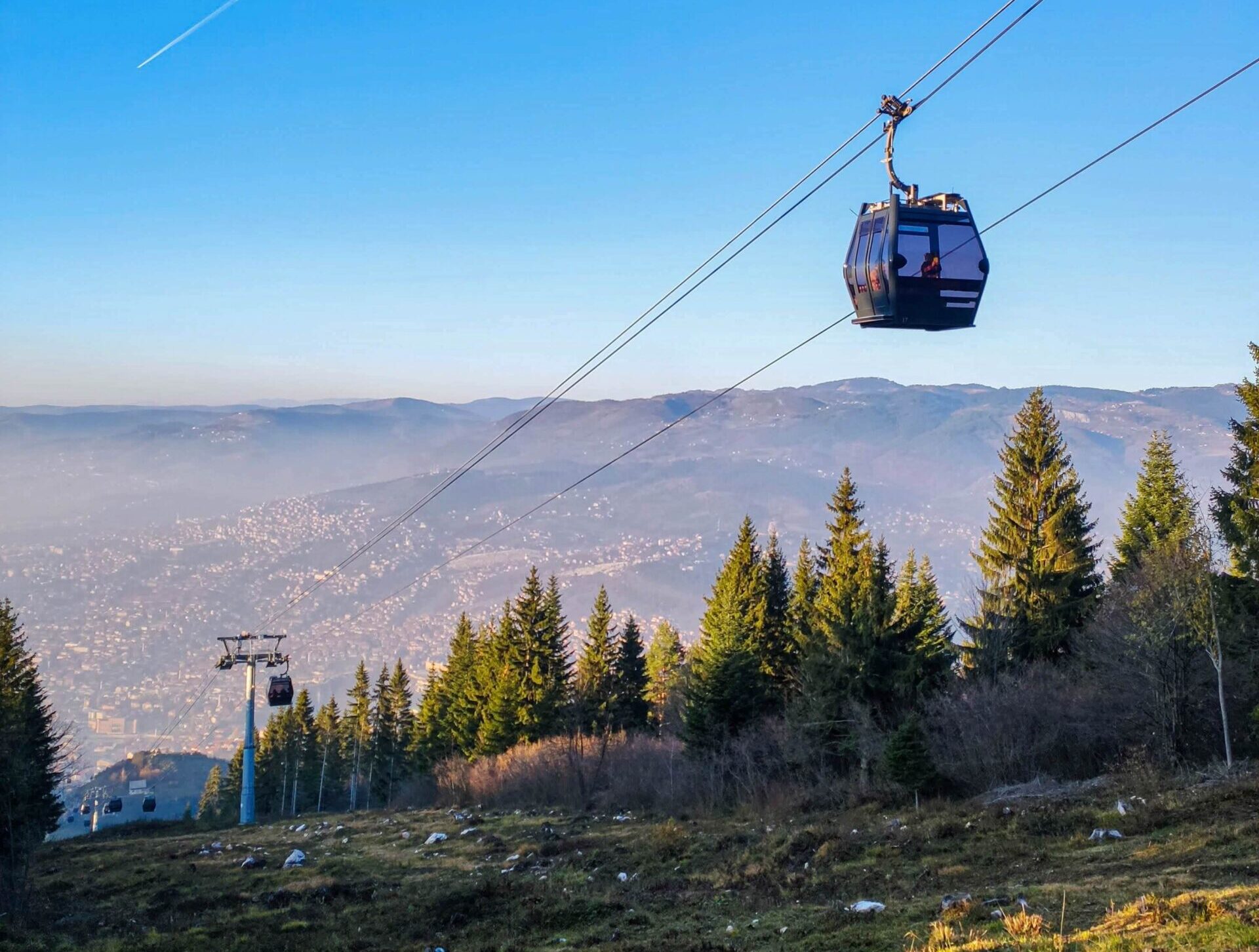
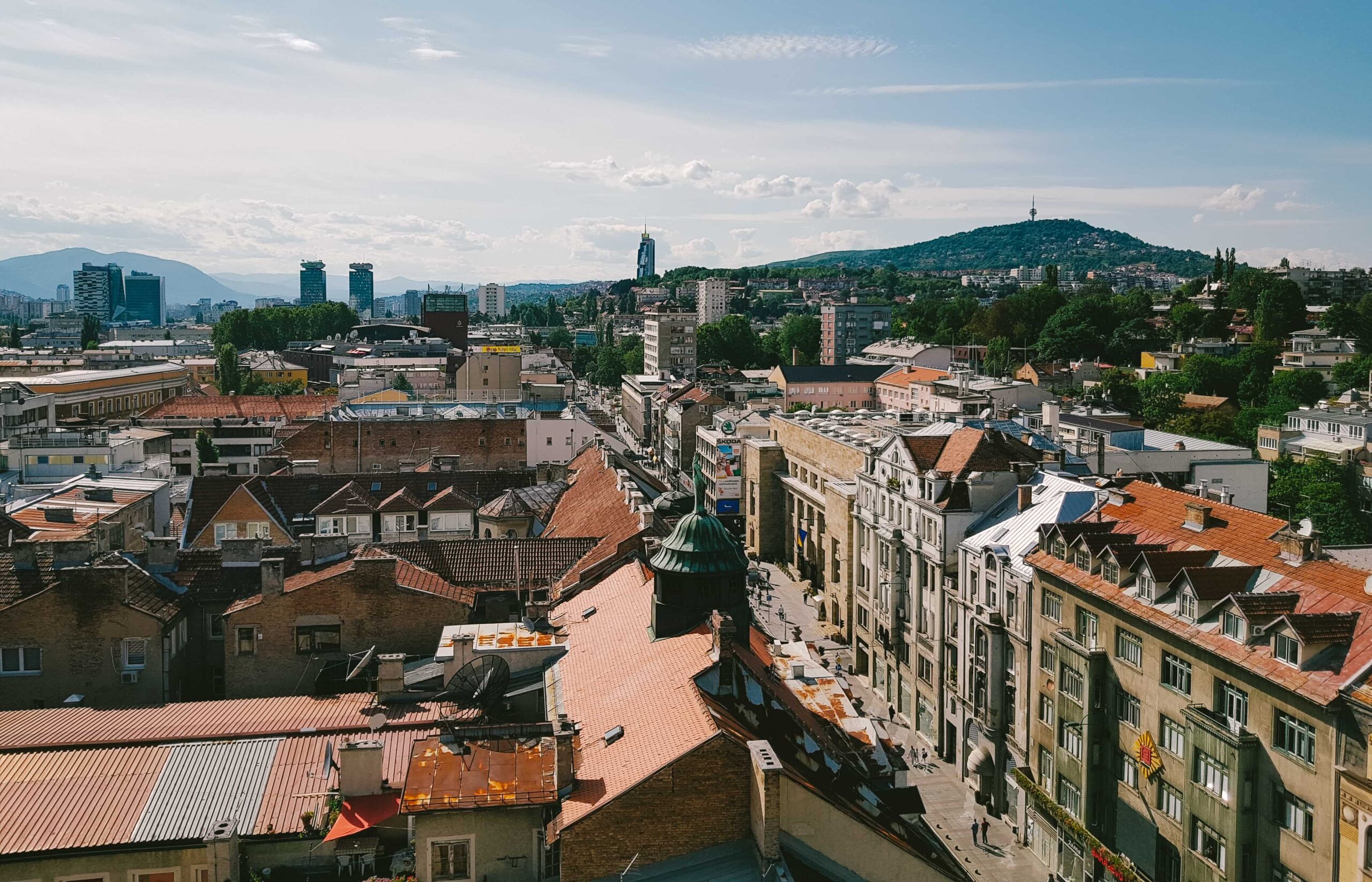
The 15th-century Old Bazaar in Sarajevo’s Old Town is a tangle of cobblestone lanes packed with stores offering metals, jewelry, ceramics, and souvenirs. The storefronts spill out onto the tiny streets, and the shiny copper kiosks and traditional coffee settings draw attention at every step. Browse the traditional handicrafts, enjoy the local coffee, Bosnian ice cream, or the classic Cevapi cuisine; and admire the historical architecture. The Old Town is one of our favorite things to do in Sarajevo and a must-see on every visit.
After that, go to Sebilj Fountain, one of Sarajevo’s most recognizable attractions, the Moorish wooden Sebilj Fountain is a must-see in the city. According to legend, people who drink from the fountain twice will return to Sarajevo, but we didn’t put the notion to the test! The fake Ottoman-style fountain attracts pigeons as well as people, and the area is commonly referred to as Pigeon Square.
The next stop is the Gazi Husrev-beg ‘Beys’ Mosque. The 16th-century Bey’s Mosque in classic Ottoman design is an architectural gem in Sarajevo. The inside is decorated with Koranic writing, and the mosque oozes peace and elegance.

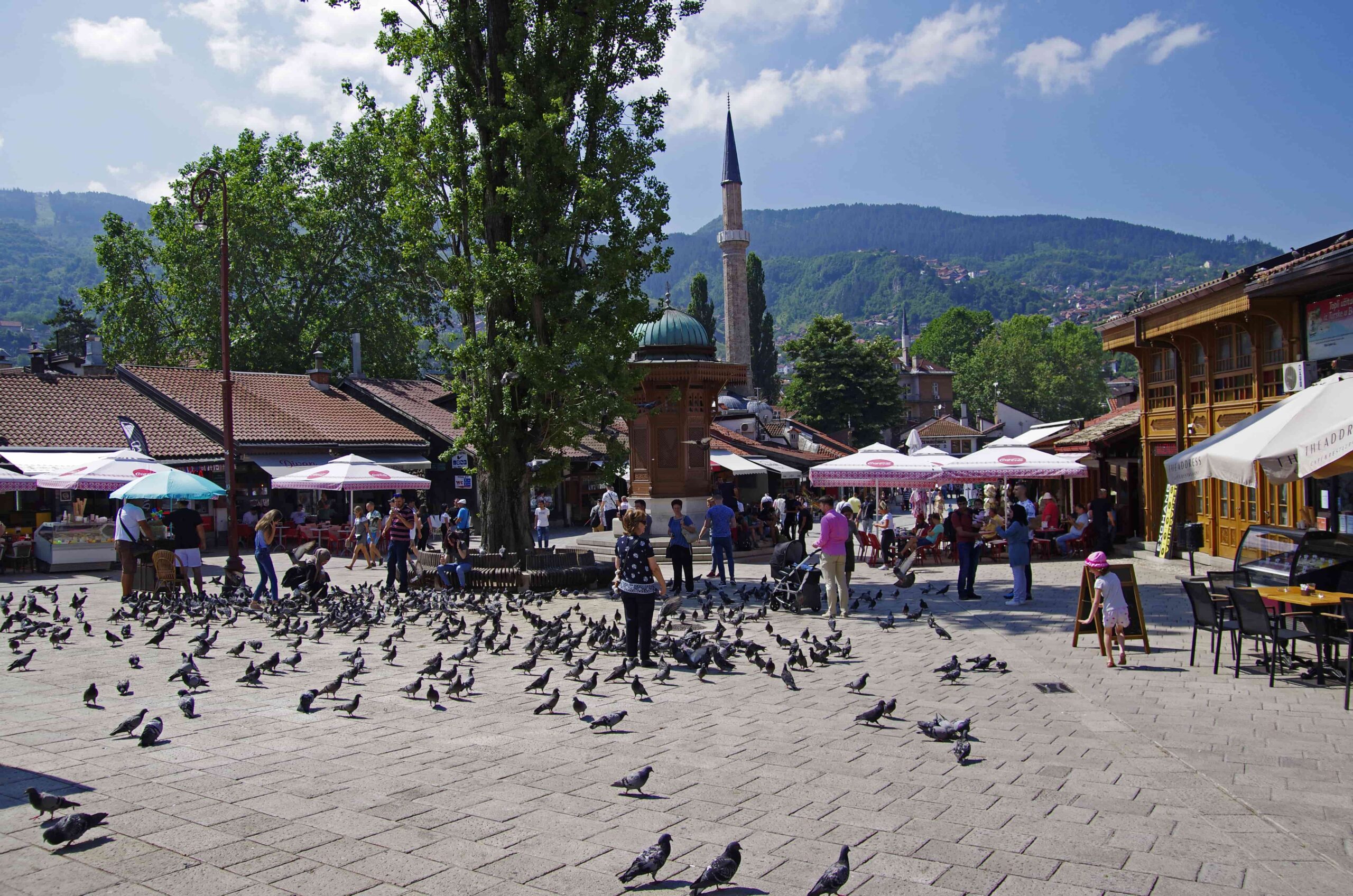
The Emperor’s Mosque is the most gorgeous mosque in the Balkans and is up next. This 1457 Emperor’s Mosque was the first mosque erected following the Ottoman conquest of Bosnia and Herzegovina, and it was dedicated to Sultan Mehmed the Conqueror, who conquered Constantinople. The masjid is among the most spectacular Ottoman mosques in the Balkans, and its river setting is breathtaking.
Sarajevo, the capital city, is abundant with eateries providing delicious authentic Bosnian food ranging from affordable to luxury selections to pick from whether you’re searching for snacks or dinner.

- Backpacker: Hostel Kucha (Sarajevo), Balkan Han Hostel (Sarajevo), Hostel Franz Ferdinand (Sarajevo), Hostel City Center Sarajevo
- Budget: Apartments Bascarsija, Hotel Hayat
- Mid-range: Hotel Story, Hotel Aziza Sarajevo, Nortel Botique Hotel, Hotel VIP
- High end: Pino Nature Hotel, Hotel Isa-begov Hamam, Hotel Sana, Promenade Inn Sarajevo, Residence Inn Sarajevo, Hotel Garni Konak
This section will be added shortly.
Sarajevo has an international airport, but it is often cheaper to fly into nearby Tuzla. Refer to the "How to get to Bosnia and Herzegovina section in this page" for more detailed information.
By Bus
There are good bus connections from cities in the neighboring countries, such as Zagreb and Belgrade.
Day 2
The Grim Past
During the civil war, Sarajevo faced its worst days during the Siege of Sarajevo. Traces may still be seen across the city, but Sarajevo’s multicultural character was unbreakable. The city is still recognized as Europe’s Jerusalem and is now a symbol of hope and healing.
The Alifakovac Cemetery, which originates from the 15th century, is situated in one of Sarajevo’s oldest towns and is where you will be headed first after your breakfast. The graveyard is named after Ali Faqih, an Islamic scholar who was present when Sarajevo’s deed of endowment, a document that marked the city’s founding, was signed.
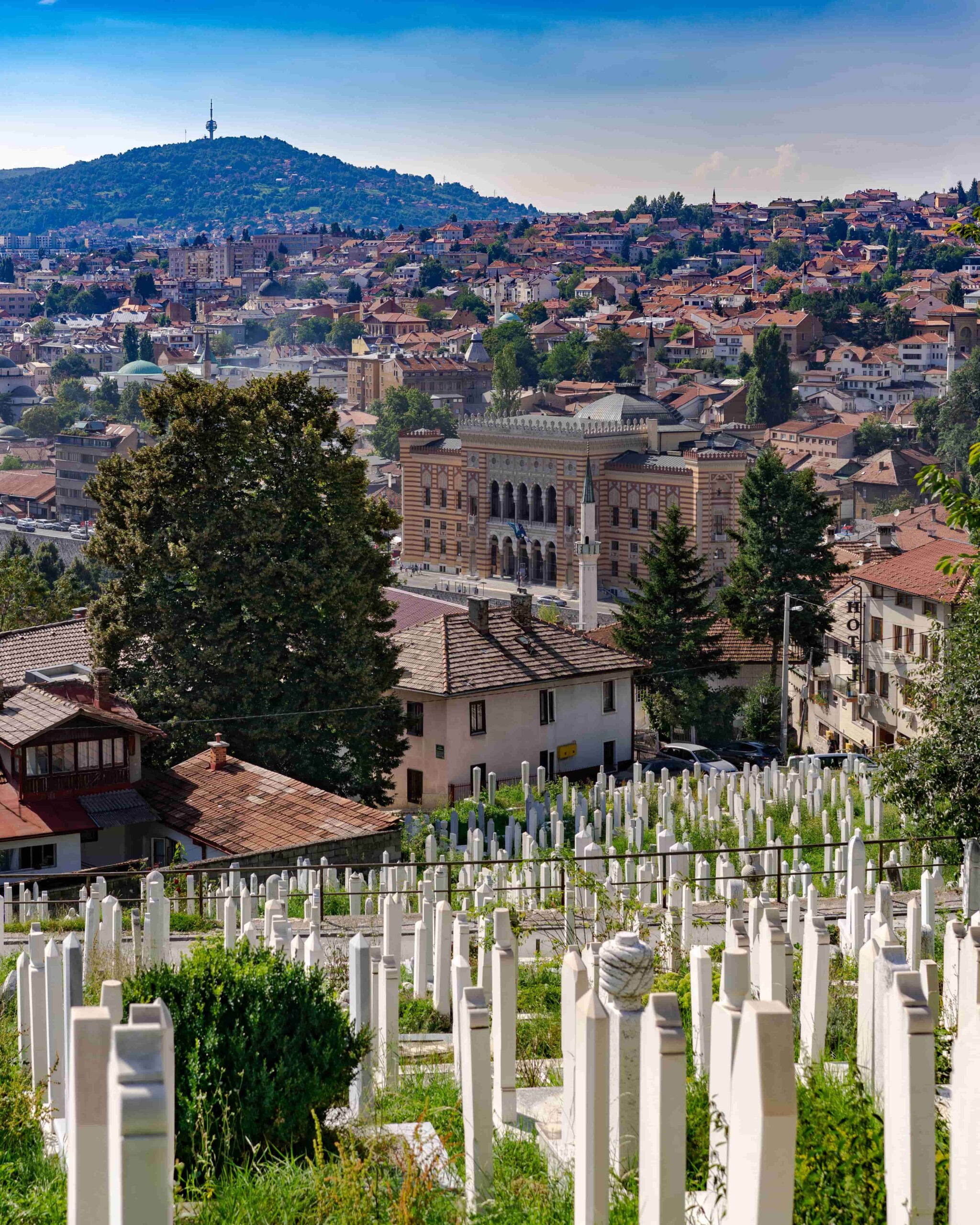
The weather-worn Old Jewish Cemetery dates from 1630 and comprises about 4,000 burials. Because of its strategic hillside location, it was occupied by Bosnian Serbs throughout the conflict in Bosnia and Herzegovina. The cemetery was severely damaged by front-line warfare, and about 70 land mines had to be removed before the Old Jewish Cemetery could be accessed after the war.
This cemetery in Sarajevo allows you to walk through the past. The Alifakovac Cemetery and the Old Jewish Cemetery, which overlook the city, are the final resting places for many prominent residents.
Next up watch Vjena Vatra, The Eternal Flame, Sarajevo has a horrible history. Sarajevo’s Eternal Flame, Vjecna Vatra, is a memorial to the military and civilian fatalities of World War II in Sarajevo. The burning open flame symbolizes that they will never be forgotten.
Understand the wounds of the past on Sarajevo Rose. Walking around Sarajevo it’s impossible to miss the blood like stains marking the city pavements. During the Siege of Sarajevo, the city was bombarded by hundreds of shells hitting its streets every day and which left crater-like holes all over the pavements. The craters were filled with red resin in memory of the casualties and are known as Sarajevo Roses. The roses are slowly disappearing from the city streets as Sarajevo rebuilds and regenerates.


Stand on the site where World War I began at the Latin Bridge, which rises solemnly above the Miljacka River in Sarajevo. The Latin Bridge occupies a special role in world history. On June 28, 1914, Archduke Franz Ferdinand of Austria, the next in line to the Austro-Hungarian throne, and his wife Sophie were killed as their motorcade went over the Latin Bridge, beginning a series of events that led to World War I. It’s astonishing to stand on the Latin Bridge and realize the enormous impact the events that occurred here had on world affairs.
Marvel at the unusual architecture of Sarajevo City Hall, Vijenica. Vijenica was designed in 1891 by Czech architect Karel Pak, but he abandoned the project because to criticism from officials. The structure was totally reconstructed after being damaged during the war. The displays include Hague Criminal Court reenactments and a subterranean museum.

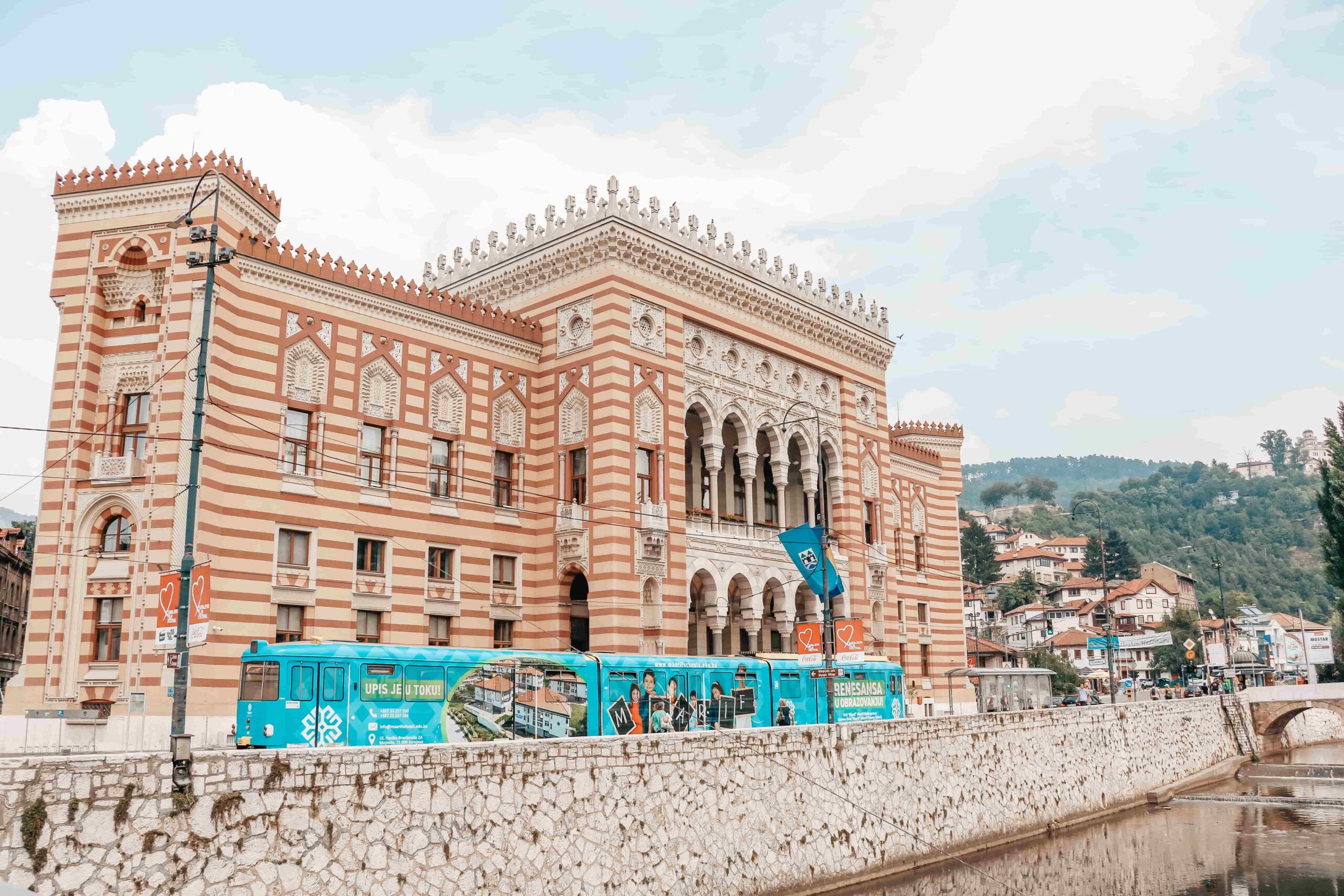
Explore the history of Bosnia at Gallery 11/07/95. The exhibition Gallery 11/07/1995 commemorates the Srebrenica catastrophe, in which over 8,000 Muslim men and boys were massacred in the biggest atrocity on European territory since World War II. The terrible museum features photographs, movies, and audio that depict the horrors that occurred in Srebrenica. The museum is one of the most harrowing locations we’ve seen on our travels, and it truly brought the tragedies of the past to life.
At the Sarajevo War Tunnel, you can relive the horrors of the Sarajevo Siege. During the Siege of Sarajevo, the Bosnian Military constructed the Sarajevo Tunnel to connect the city to other Bosnian-held areas. It was a lifeline for Sarajevo, allowing food, arms, and aid to be carried into the city. Today, the passageway and its museum provide an intriguing look into the city’s past.
You can conclude your day in whichever place you want for a hearty traditional dinner.
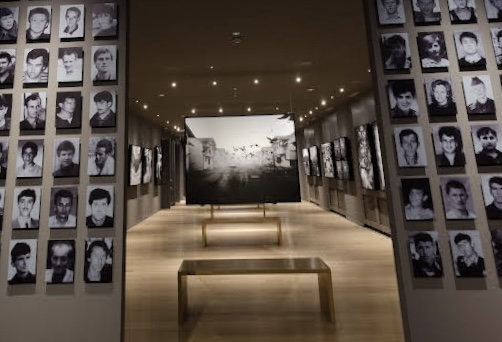



Day 3
Trebević
Start your day after breakfast by visiting the Sacred Heart Cathedral, Katedrala Srca Isusova. The Neo-Gothic Sarajevo Cathedral is Bosnia and Herzegovina’s largest cathedral, with stunning stained glass windows and soaring ceilings. A monument honoring Pope John Paul II, who visited Sarajevo in 1996 and 2003, stands in the cathedral’s front piazza.
After that, take the cable car to Mount Trebević. Since 1959, Mount Trebević has been served by a cable car that transports tourists from Sarajevo to the lush green peak. The service came to an end on March 2, 1992, when its guard, Ramo Biber, was killed in the Sarajevo siege. From 1992 until 1995, gunshots and mortars rained down from Trebevic Mountain, killing dozens in Sarajevo’s center. Even after the Siege of Sarajevo ended, it took years to clear Trebević of landmines. The cable car reopened in April 2018, and people have returned to Trebević to experience its landscapes and treks, as well as 32 cars decked in the colors of the Bosnian flag and the Bosnian flag.
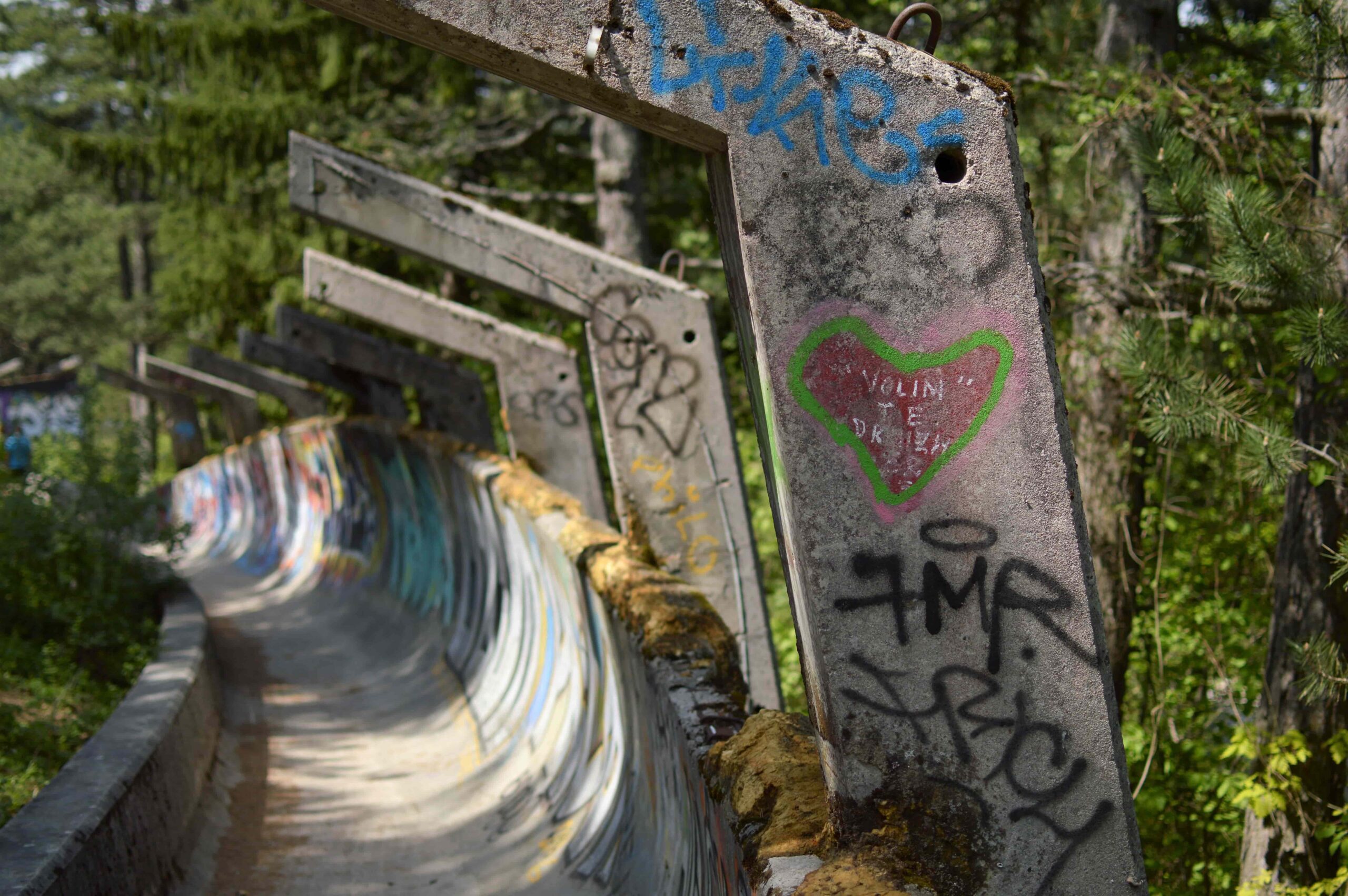
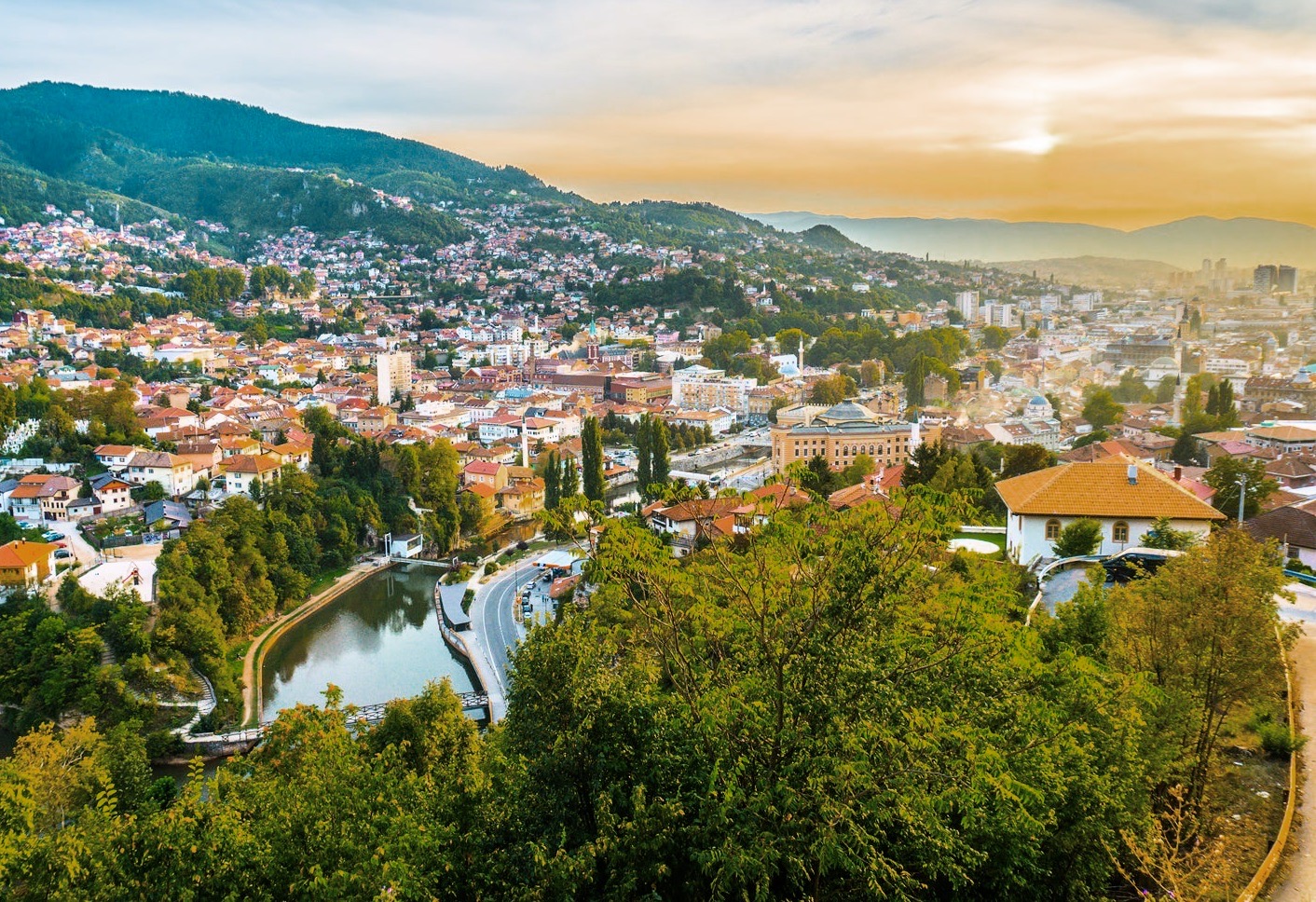
At the bobsleigh track, relive the 1984 Winter Olympics. Sarajevo was granted the Winter Olympics in 1984, and a bobsleigh and luge track was built at the summit of Mount Trebević. The railway was damaged while being used as an artillery position by Bosnian Serb troops during the Siege of Sarajevo, but it is still feasible to travel the length of the route today. The track is graffiti-covered and surrounded by overgrown grass, yet its historical and sports significance make it a moving location to visit. We saw some coverage of the 1984 Winter Olympics after our visit, and the contrast was stunning.
Watch the sun going down from Žuta Tabija, The Yellow Fortress. The Fortress, which was built in the early 1700s, is one of Sarajevo’s most popular view points, and hundreds gather there every evening to watch the sunset. Although not much of the stronghold survives, the breathtaking views of Sarajevo make it a must-see.
Day 4
Off to Konjic
Konjic is a tiny town located halfway between Sarajevo and Mostar. The bright blue Neretva river that passes through its magnificent historic core defines its charm. One of the major sites you will definitely see is the Old Stone Bridge in Konjic is one of Bosnia’s best surviving Ottoman bridges.
It is also where, Tito created a secret nuclear bunker deep beneath the ground, directly next to the river but concealed from view. It was never utilized and is currently available to the public.
Konjic is surrounded by breathtaking natural beauty. The Neretva River is one of the top rafting destinations in Bosnia that you should consider doing.

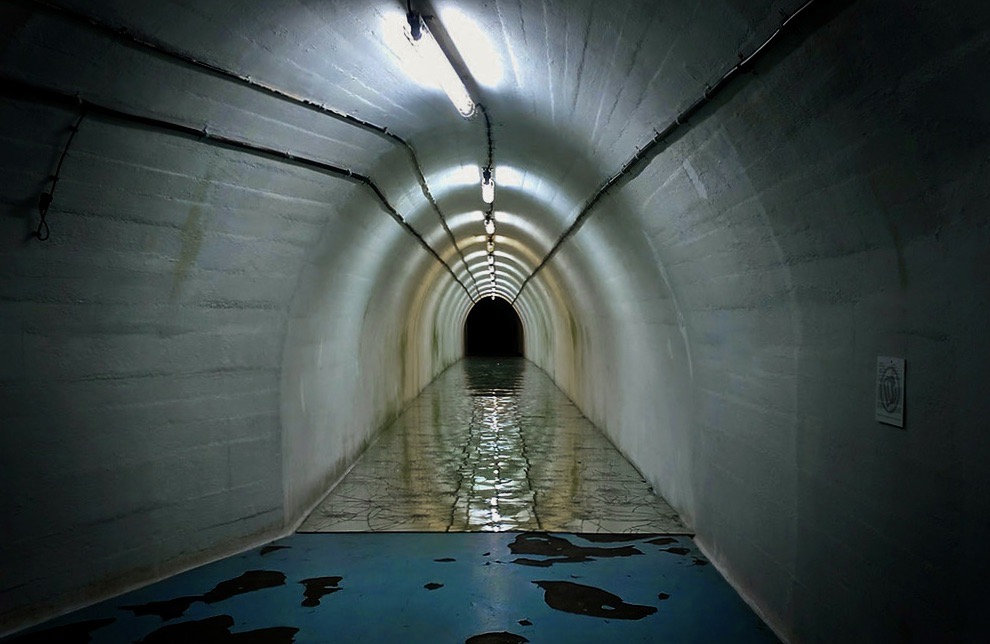
- Backpacker: Apartments Station, Apartments S & S, Dzajica Buk Neretva Rafting
- Budget: Pansion Neretva
- Mid-range: Bobića Konak, Aparmani Lux Novalić Konjic
- High end: Hotel Jablanica, Tarcin Forest Resort, Glamping Bagrem
By Bus
There are several buses per day to Sarajevo (1 hour) or Mostar (2 hours)
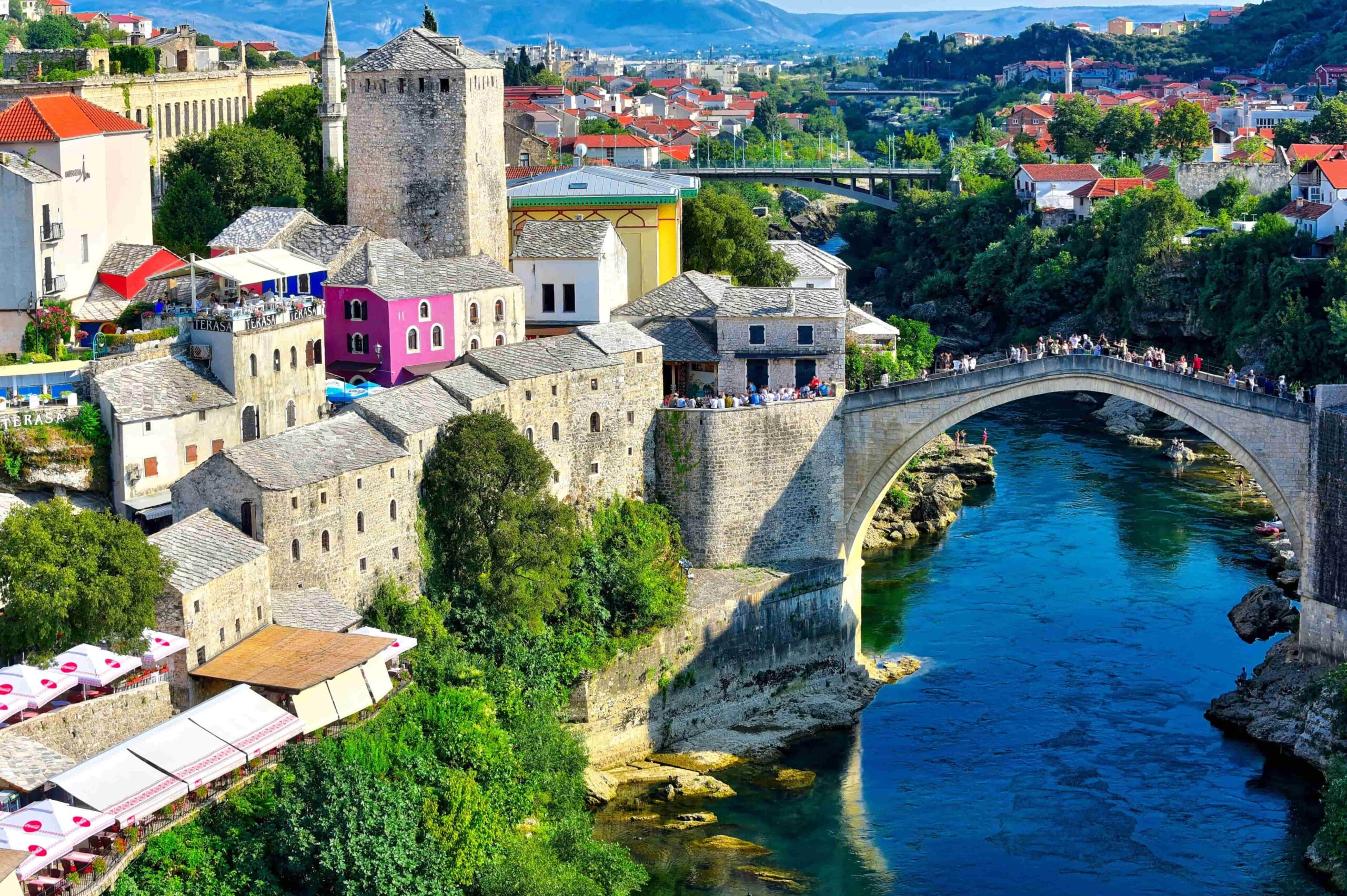

Days 5
Head to Mostar
Mostar is one of Bosnia and Herzegovina’s most beautiful cities. It is well-known for its ancient 15th-century Ottoman town and its spectacular bridge over the Neretva River.
Mostar’s tough history is easily forgotten because to the remarkable restoration work. During the war, it was extensively bombarded. The majority of the structures were destroyed, including the old bridge that connected the Bosnian and Croatian parts of town.
The rebuilt bridge not only allowed people to cross the river again, but it also served as a symbol of healing and coexistence. The Old Bridge region, with its typical Turkish buildings and mosques, is once again an exceptional example of Ottoman architecture.
- Backpacker: Sweet Guesthouse, Hostel Miran Mostar, Taso's House Mostar, Pansion Cardak, Rooms Goa Mostar, Vila Sara, Hostel David, Hostel Musala, and Layla Guesthouse
- Budget: Zdrava Hrana, Lombrelle
- Mid-range: Hotel Padria, Villa Milas
- High end: Hotel Pasha, Kriva, Cuprija Hotel, Hotel Almira
By Bus
Buses go frequently to Sarajevo (3 hours) and Konjic (2 hours). Trains have a bad image in Bosnia and Herzegovina. There is, however, one notable railway ride in Bosnia. The Sarajevo-Mostar train vies with the Belgrade-Bar train for the title of Europe's most beautiful train ride.
Since 2017, Bosnia has used modern Talgo trains for its daily voyage, making it a 2 hour rail ride. This is most likely the only route where the train is presently quicker than the bus. Both provide breathtaking views of the surrounding landscape. The view along this path is worth the journey on its own.
How to get to Blagaj
Buses 10 and 11 depart from the United World College in the Spanish Square every hour. It just takes 2.10 kilometers to get to Blagaj, from where it is a delightful stroll to the mystic monastery.
Day 6
A Day Trip to Blagaj
The small town of Blagaj is one of the most intriguing day excursions from Mostar. One of Bosnia’s most photographed sites is the old Dervish monastery, which situated at the foot of a rocky cliff next to the Buna river’s spring. It’s a stunning setting. The 600-year-old monastery is now a museum that depicts how monks used to live.
Blagaj, on the other hand, has a considerably longer history. Before the Ottomans arrived in the 15th century, there was an Illyrian and a Roman colony. Blagaj genuinely grew into a bustling town at that time. They constructed a number of mosques, guesthouses, madrassas, mills, and stone bridges.

The ruins of a medieval stronghold may be seen on the slopes above Blagaj. It is a one-hour trek with breathtaking views from the summit.
Blagaj isn’t the only day excursion option from Mostar. Several picturesque tourist sites may be found in and around Mostar. Unfortunately, they are more difficult to reach and need either your own transportation or a tour. The good news is that budget trips in Mostar are fairly easy to schedule.


Day 7
Back to Sarajevo for Departure or Continue the Journey
You will begin your journey home today. People with additional time may opt to continue their experience by visiting Central Bosnia (Travnik and Jajc), Bihac and Una National Park, or Sutjeska National Park. All of these excursions are three-day trips from Sarajevo. If you only have 10 days in Bosnia, you can select one of these to prolong your stay and do more.
The Most Popular Food in Bosnia and Herzegovina
Bosnian cuisine contains a variety of delectable and flavorful meals that are closely connected to Turkish, Greek, and other Mediterranean cuisines. However, due to Austrian control for many years, there are numerous influences from Central Europe as well. Almost every dish has some form of meat, therefore vegetarians will have a difficult time finding anything traditional that they can eat. Even veggie meals are sometimes seasoned with bacon or pork meat, so check before ordering. Meat meals include robust and satisfying kebabs, croissants, and patties. Bosnian cuisine emphasizes on food, cooking, and eating habits that are balanced between Western and Eastern influences.
Many people have admired Bosnian food for its unique blend of styles and flavors, and it is one of the things that many travelers are aware of before visiting the country. Bosnian food is a mash-up of recipes that originated in Bosnia and Herzegovina and dishes that were introduced to the nation from all over the world, which the locals carried and began making in their own distinct style.

Ćevapi
Ćevapi (pronounced che-va-pee) is a signature meal and the national dish in Bosnia. They are small minced meat sausages using either veal, lamb or beef and often a mix of two or more. Characterized by its oblong shape, and prepared over a grill. Ćevapi is served as a set of eight to ten pieces with somun (Bosnian Pita) or rice accompanied with raw onions, sour cream, or kaymak, with many variations. The bread is usually put on the grill alongside the meat to absorb the flavors and juices of the meat, making it incredibly tasty. Utilizing many popular spices, with a strong, but amazing flavor, each restaurant, or home has its own unique mix and recipe. Even regional variances makes it slightly differently.

Klepe
If you love ravioli, you’ll relish Klepe. Klepe is a Bosnian dumpling that can be filled with meat, lamb, or cheese. The meal is served with either a garlic sauce or yogurt. Frequently compared to ravioli, the dough is created with flour, eggs, and salt, and traditionally filled with salt-and-pepper-seasoned ground beef and onions. These dumplings are boiled, then softly sautéed in a skillet before being baked with sour cream, garlic, and sweet paprika spice. Klepe is served hot, and there are various versions available, such as fillings prepared with cheese, spinach, or chicken.
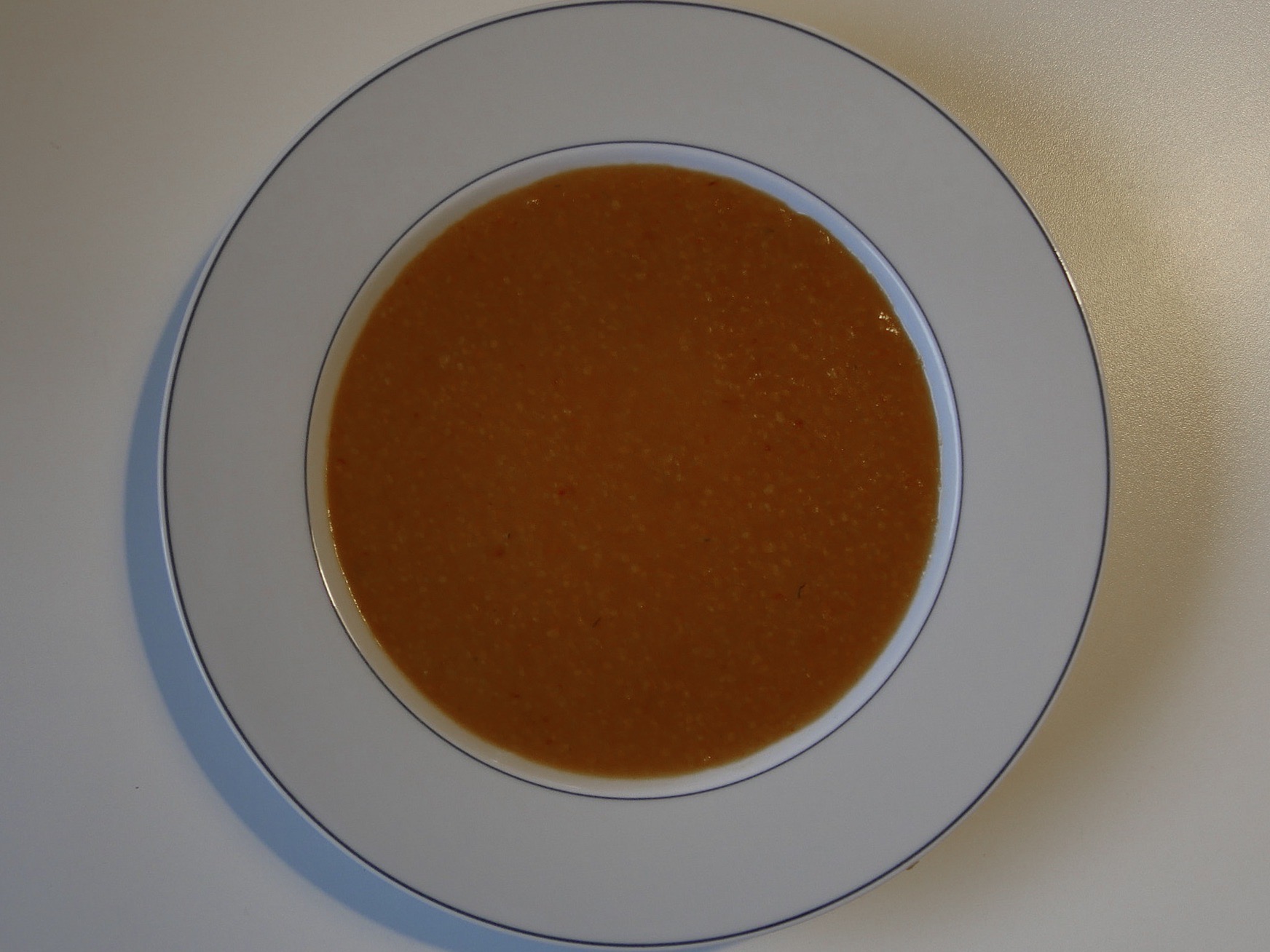
Tarhana
Tarhana corbasi is of Turkish origins and is made from flour, yeast, egg, and water which is left to ferment and dry over several days. The soup contains fermented milk and yogurt, as well as grain, veggies, and meat. You may or may not enjoy the sour flavor, but it’s worth a try if it’s on the menu. Traditionally, the Ottomans used this soup to preserve perishable ingredients.

Jabukovača
Jabukovača is a typical Bosnian apple pie that originated in Sarajevo. It is prepared similarly to baklava, but with the addition of chopped apples. The thin dough is sprinkled with chopped apples, sugar, vanilla sugar, walnuts, and lemon juice. It is then rolled and placed on a baking sheet. When served, Jabukovača is often sliced into slices and drenched with sherbet, a sweetened concoction of sugar, honey, and lemon juice.
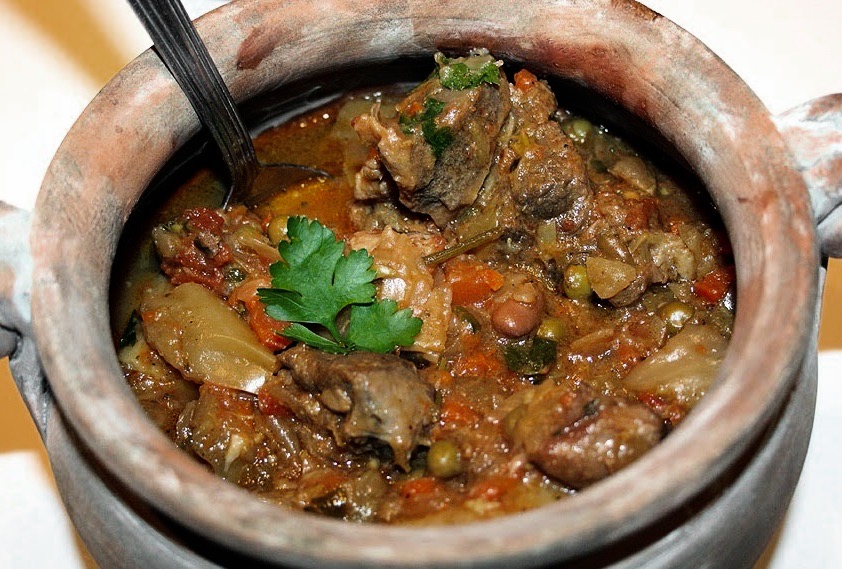
Bosanski Lonac
Another signature dish, another national delectable stew-based dish. It is assumed that the Bosnian pot originated in medieval Bosnia, where it was popular among local miners. In its most traditional form, it is cooked in a clay pot over several hours without the use of almost any spices, retaining most of the flavor of the ingredients. It is now made in metal pots with alternate layers of vegetables like as potatoes, cabbage, onions, garlic, tomatoes, paprika, and eggplant, as well as meat, veal or lamb, that is cooked for hours to make a full supper in a wonderful broth. The modern version is more refined than the original medieval form, yet the dish’s history lives on.
What's the Travel Budget for Bosnia and Herzegovina?
Flights
- Flights start at roughly $110 from nearby countries. Tickets however on average cost around $500 and can cost way more depending on which class and from which country you depart from.
Accommodation
- Nomad Backpacking style travelers can expect to spend around $90 for a week
- Budget travelers can expect to spend around $200 for a week
- Mid-range travelers can expect to spend around $450 for a week
- Luxury travelers can expect to spend around $900 for a week
Food Budget (Three meals and drinks)
- Nomad Backpacking style travelers can expect to spend around $11 per person per day
- Budget travelers can expect to pay around $20 per person per day
- Mid-range travelers on average would cost $25 to $38 per person per day
- Luxury travelers can expect to pay around $40 to $60 per person per day
Overall Budget Styles (Not including Flights, Tours, Transportation, or Car Rental)
- Nomad Backpacking style travelers can expect to spend roughly $190 for a week
- Budget travelers can expect to spend close to $380 for one person for a week
- Mid-range travelers can expect to spend approximately $730 for one person for a week
- Luxury travelers can expect to spend around $1350 for one person for a week
Flights
- Flights start at roughly $110 from nearby countries. Tickets however on average cost around $500 and can cost way more depending on which class and from which country you depart from.
Accommodation
- Nomad Backpacking style travelers can expect to spend around $90 for a week
- Budget travelers can expect to spend around $200 for a week
- Mid-range travelers can expect to spend around $450 for a week
- Luxury travelers can expect to spend around $900 for a week
Food Budget (Three meals and drinks)
- Nomad Backpacking style travelers can expect to spend around $11 per person per day
- Budget travelers can expect to pay around $20 per person per day
- Mid-range travelers on average would cost $25 to $38 per person per day
- Luxury travelers can expect to pay around $40 to $60 per person per day
Overall Budget Styles (Not including Flights, Tours, Transportation, or Car Rental)
- Nomad Backpacking style travelers can expect to spend roughly $190 for a week
- Budget travelers can expect to spend close to $380 for one person for a week
- Mid-range travelers can expect to spend approximately $730 for one person for a week
- Luxury travelers can expect to spend around $1350 for one person for a week
Flights
- Flights start at roughly $110 from nearby countries. Tickets however on average cost around $500 and can cost way more depending on which class and from which country you depart from.
Accommodation
- Nomad Backpacking style travelers can expect to spend around $90 for a week
- Budget travelers can expect to spend around $200 for a week
- Mid-range travelers can expect to spend around $450 for a week
- Luxury travelers can expect to spend around $900 for a week
Food Budget (Three meals and drinks)
- Nomad Backpacking style travelers can expect to spend around $11 per person per day
- Budget travelers can expect to pay around $20 per person per day
- Mid-range travelers on average would cost $25 to $38 per person per day
- Luxury travelers can expect to pay around $40 to $60 per person per day
Overall Budget Styles (Not including Flights, Tours, Transportation, or Car Rental)
- Nomad Backpacking style travelers can expect to spend roughly $190 for a week
- Budget travelers can expect to spend close to $380 for one person for a week
- Mid-range travelers can expect to spend approximately $730 for one person for a week
- Luxury travelers can expect to spend around $1350 for one person for a week
Flights
- Flights start at roughly $110 from nearby countries. Tickets however on average cost around $500 and can cost way more depending on which class and from which country you depart from.
Accommodation
- Nomad Backpacking style travelers can expect to spend around $90 for a week
- Budget travelers can expect to spend around $200 for a week
- Mid-range travelers can expect to spend around $450 for a week
- Luxury travelers can expect to spend around $900 for a week
Food Budget (Three meals and drinks)
- Nomad Backpacking style travelers can expect to spend around $11 per person per day
- Budget travelers can expect to pay around $20 per person per day
- Mid-range travelers on average would cost $25 to $38 per person per day
- Luxury travelers can expect to pay around $40 to $60 per person per day
Overall Budget Styles (Not including Flights, Tours, Transportation, or Car Rental)
- Nomad Backpacking style travelers can expect to spend roughly $190 for a week
- Budget travelers can expect to spend close to $380 for one person for a week
- Mid-range travelers can expect to spend approximately $730 for one person for a week
- Luxury travelers can expect to spend around $1350 for one person for a week
If you want to know what to pack, read this list below:
- This is a conservative country that can get extremely cold, dress accordingly
- Raincoat or Light Waterproof Jacket
- Hiking Boots or Sturdy Sneakers (Shoes You Don’t Mind Getting Wet)
- Sunscreen
- Insect Protection – Repellent and Clothing
- Sunglasses and Sun Hat
- Water Shoes
- Beach Towels/Sarong
- Dry Bag
- Money Belt or Cross Bag
- Portable Medical Kit
- Flashlight or Headlamp
- Copies of your passport.
- Get all the needed vaccinations before traveling
- A power bank is a must in any travel.
- Always have some cash with you just in case there are no ATMs and if you are dealing with a business that solely accepts cash
- Get yourself an adapter for your gadgets
- 1 toothbrush
- 1 tube of toothpaste
- 1 razor
- 1 package of dental floss
- 1 small bottle of shampoo
- 1 small bottle of shower gel
- 1 towel
- Deodorant
- Band-Aids
- Hydrocortisone cream
- Antibacterial cream
- Earplugs
- Tylenol
- Hand sanitizer (germs = sick = bad holiday)
- A key or combination lock
- Zip-lock bags
- Plastic bags (great for laundry)
- Universal charger/adaptor
- LifeStraw (A water bottle with a purifier)
- 1 dry shampoo spray & talc powder
- 1 hairbrush
- Makeup you use
- Hairbands & hair clips
- Feminine hygiene products
Clothing For Boys
- 1 pair of jeans or khaki pants
- 1 pair of shorts
- 1 bathing suit
- 5 T-shirts
- 1 long-sleeved T-shirt
- 1 pair of flip-flops
- 1 pair of sneakers
- 6 pairs of socks
- 5 pairs of boxer shorts
Clothing For Girls
- 1 swimsuit
- 1 sarong
- 1 pair of stretchy jeans
- 1 pair of leggings
- 2-3 long-sleeve tops
- 2-3 T-shirts
- 3-4 spaghetti tops
- 1 light cardigan
Want to plan your own trip, here are some of the best resources that can help you
- Skyscanner – They search small websites and budget airlines that larger search sites tend to miss. They are hands down the number one place to start.
- Momondo – This is another favorite flight search engine because they search such a wide variety of sites and airlines. Always check here too.
- Booking.com – The best all-around booking site that constantly provides the most affordable and lowest rates. They have the widest selection of budget accommodation.
- Couchsurfing – This website allows you to stay on people’s couches or spare rooms for free. It’s a great way to save money while meeting locals who can tell you the ins and outs of their city. The site also lists events you can attend to meet people (even if you’re not staying with someone).
- Intrepid Travel – If you want to do group tours, go with Intrepid. They offer good small group tours that use local operators and leave a small environmental footprint.
- Grassroots Volunteering – For volunteering, Grassroots Volunteering compiles a list of good local volunteer organizations that keep the money within the community.
- Get Your Guide – Get Your Guide is a huge online marketplace for tours and excursions. They have tons of tour options available in cities all around the world, including everything from cooking classes, walking tours, street art lessons, and more! It has the world’s largest collection of things to do with more than 30,000 activities in 7500 destinations.
- SafetyWing – Safety Wing offers convenient and affordable plans tailored to digital nomads and long-term travelers. They have cheap monthly plans, great customer service, and an easy-to-use claims process that makes it perfect for those on the road.
- Trip Advisor: Check the reviews and then book your accommodation. TripAdvisor is where you go when you want to compare prices with multiple accommodation providers.
- VRBO: is the main search engine to use when you are looking for a home or apartment rental. It can sometimes be cheaper than hotels and it is the best way to stay in areas that offer a more local feel.
- Hostelworld: With one of the largest databases of hostels in the world, Hostelworld is the go-to site when you are looking for budget accommodation.
- Rome 2 Rio: If you want to see how to get somewhere by plane, train, bus, ferry, or car Rome2Rio lays it all out for you as well as related costs.
- World Nomads Insurance: When traveling you should always have travel insurance. We have found the best bang for your buck is by far World Nomads.
Final Thoughts on Bosnia and Herzegovina
The country of Bosnia and Herzegovina offers a lot of history which is evident throughout the country, with its grim past, lovely architecture, welcoming people, and beautiful nature making it so appealing and even scenic thanks to this mix. This only means that Bosnia and Herzegovina is a country worth visiting. From the lovely mosques to the carefully carved Ottoman buildings and creative marvels to its beautiful lanscapes, the beauty of Bosnia is a panoramic one. Would you visit Bosnia and Herzegovina?
Have you been to Bosnia and Herzegovina? Let us know how your trip was in the comments below.